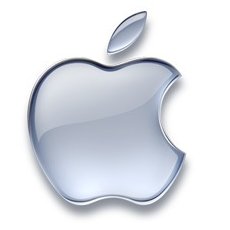Apple's 3D OS X interface unveiled


The most extensive of the filings, titled "Multi-Dimensional Desktop," was submitted to the U.S. Patent and Trademark Office back in June of last year. The interface enhancements could be candidates for inclusion in future versions of Mac OS X.
Want a peek? Take a look and view the gallery, after the jump...
So what's inside? The filings depict a 3D version of the familiar 2D Mac OS X desktop, with some examples also removing or modifying Apple's signature menubar at the top of the screen.So what's it all mean? Well, most of the diagrams have side surfaces that could be capable of housing object receptacles, including a "floor" that would include the Mac OS X Dock and icon stacks positioned in the background. Like the floor surface, object receptacles like the Dock can be placed along the walls at certain "depths," and not necessarily in front of the 3D icon stacks seated on the floor.
As for that "floor," Apple in one example states that the floor can be vast and sprawling, with only a portion of the surface displayed at any given time. "For example, upon a selection of the surface, [...] the surface can be scrolled in the directions indicated by the arrows," the company states. "The floor surface can include a scroll ingress and a scroll egress in which a scroll direction transitions from the scroll ingress to the scroll egress."
Get your head ready for some serious mental acrobatics.
AppleInsider elaborates:
During a scroll, the stack items can be displaced from the floor surface by fading from view or by a failing effect. Meanwhile, application windows can be dragged to one of the side walls, where they'd appear in thumbnail form, or as stacks of windows. The windows could be restored to their traditional form by dragging them back to the back surface (Desktop) or through a simple double-click.
There's more at play: the side walls could be colored. For example, the side surfaces could be black in color, or respective patterns, colors, or images can be rendered on each side surface. Other differentiation schemes including color schemes and image schemes can also be applied, Apple said.
Additionally, a lighting aspect could be employed to generate an illumination effect from window thumbnails or widgets placed on the side walls, such as a ray of light, or in imitation of local weather conditions.
"In one implementation, a maximum number of stack items can be displayed on the surface. If the addition of a new stack item causes the number of displayed stack items to be exceeded, then a stack item nearest a surface intersection can be displaced from the surface," Apple states. "For example, if the maximum number of stack items to be displayed is four, then [one of the stacks] can continue to move to the edge of the surface, where [it would be] displaced, e.g., fades from view, atomizes, etc."
Same goes for palettes: a tool bar or layers palette can be displayed on the side walls when Photoshop is running.
Confused yet? There's plenty more to learn, including the use of 3D icons and displaying Windows across one or more surfaces, with the ability to slide windows across the back surface and side walls.
"For example, the last access time for icons and other system object representations can be monitored. If the last access time for an icon or other system object representation exceeds a first threshold, the icon or other system object representation can be automatically transitioned to the surface implementing the deletion characteristic," Apple states. "Additionally, if the last access time for the icon or other system object representation located on the surface exceeds a second threshold, the icon or other system object representation can be automatically deleted from view."
Last but not least, one wild diagram shows an "arcuate back surface" with "side surfaces defined by arcuate regions having curvature intersections," AppleInsider writes.
"Other multidimensional desktop environment geometries can also be used. For example, in one implementation, the multidimensional desktop environment can conform to a tetrahedron-shaped environment in which a front surface of the tetrahedron defines a viewing surface, and the remaining three surfaces define a left surface, a bottom surface, and a side surface," Apple said. "In another implementation, the multidimensional desktop environment can conform to a triangular environment, in which one axis of the triangle defines the viewing surface and the remaining two sides of the triangle define a left surface and a right surface."
Don't believe me? Take a look for yourself, in a gallery of Apple's diagrams:
And if you don't buy the 3D desktop theory, check out this video of the BumpTop prototype (or Sun's Project Looking Glass for Linux fans).
The 54-page filing is credited to Apple employees Imran Chaudhri, John Louch, Christopher Hynes, Timothy Bumgarner, and Eric Peyton. [techmeme]